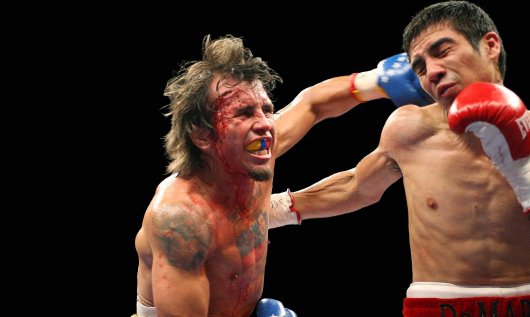

So, why does boxing attract these figures with tragic stories? It takes a certain mental attitude to beat another human…
It’s the eyes. A window into the soul they say. Some eyes have a sparkle that draws you into the person. Edwin Valero had wide, dark eyes. Eyes that had no emotion. Eyes that scare you. When his aggressive, power punching propelled Valero up the ranks, his violent bloodlust was lauded. When it was apparent that the violent bloodlust did not leave Valero even outside of the ring, it led to a catastrophic ending.
Edwin Valero was born in Bolera Alto, Venezuela on December 3, 1981. He was born into a life of poverty. [1] His childhood home saw two bedrooms shared between Edwin, his two parents and four siblings. The parents had separated by the time he turned seven. Valero described his childhood as “not a normal one.” He dropped out of school very young, at 9 he spent most days helping his mum, a dishwasher, earn extra money by picking and selling fruit at a bus station in El Vigia. The family struggled, “barely having enough to eat.” It was at twelve that he was left homeless, living on some of the roughest streets on the planet [2]. His first combat sport experience came in a taekwondo class at the age of 13. Only a few months, he had to give it up due to a lack of funds. When Valero got a job at a bicycle shop, the owner was a former boxer. He encouraged Valero to get into boxing. Rather than not be able to pay for travel, Valero looked to move into the boxing gym under the supervision of Oscar Ortega. It would be his home for the next eight years.
It was clear very quickly, that Valero was a star prodigy. His work ethic was always talked about and it begun as a youth when he would train daily with Ortega. He was a star amateur, winning three national championships. He only narrowly missed out on going to the 2000 Sydney Olympics when losing to future IBF Featherweight champion Valdemir Pereira by five points at the Americas trials final in Argentina. His most impressive win came at the Central American and Caribbean Games beating Mexican Olympian Francisco Bojado [3], ESPN’s 2001 prospect of the year, in the finals. His amateur record was 86-6 with 57 knockouts before turning professional in 2002. By the end of 2003 he had won twelve fights, all by first round stoppage. Doug Fischer, of the Ring, described him as a “hot prospect who knocked out journeymen.” His twelfth fight was his first under the Golden Boy promotional banner. He had begun training at Joe Hernandez’s gym in Vernon, California in the spring of 2003 with his reputation beginning to grow amongst boxing insiders. He became something of an urban myth, his sparring sessions spoke of in almost hushed tones. Doug Fischer claimed to be “immediately awed” even watching him train and described “a gym terror, knocking out legitimate contenders and undefeated top-level prospects.” Juan Lazcano, prior to beating Stevie Johnson in a WBC eliminator could not handle the power and chose to go and spar with Nate Campbell. Urbano Antillon, Jesus Soto Karass, Erik Morales and Daniel Jiminez were other names who Valero supposedly boxed all over the ring. Ken Adams, his trainer claimed “we are having a hell of a time finding fighters willing to work with him.”
It was before his thirteenth fight, while these reports were spreading that some bad news was received. Whilst preparing for a HBO bout in January 2004, he underwent a medical in New York. The results of the MRI showed a small spot on his brain, a possible sign of cerebral hemorrhage. Valero had a subdural hematoma following a motorcycle crash in 2001. He had been going 50mph when he crashed into the back of a car. He landed twenty feet away and had to spend thirteen days in hospital. Valero was not wearing a helmet. Golden Boy were unaware of the injury. Opinions were split. Dr. Barry Jordan of New York says there’s no way Valero should fight again while Dr. Robert Karns of L.A. says that Valero is at no greater risk of receiving a serious head injury than anyone else who steps into the ring. The New York State Athletic Commission chose to ban him, meaning Valero could not box anywhere in the United States. Valero believed himself to be fit and able to fight and claimed “there’s a lot of politics involved in the decision.” He pointed to Marco Antonio Barrera who had small metal plates inserted into his head in 1997 to treat a genetic disorder involving blood vessels. Valero was also passed as fit to box in other countries claiming “many different specialists have checked me.” Valero believed his support of Hugo Chavez, the Venezuelan President, meant the powerful people in America were against him [4]. He returned to the ring in Argentina over a year later. Another first round knockout. Golden Boy had released him prior to the fight but the fight was almost cancelled when the WBA received a fax from Golden Boy claiming they did not “endorse or condone his participation.” People who agreed with Valero about a big conspiracy theory use this as evidence rather than evidence of the lack of communication inside Golden Boy in 2006.
Boxing outside of the USA was largely like boxing in it for Valero, he made it to 18 wins all by first round stoppage, a world record since eclipsed. It was Genaro Trazancos [5] who made it into the second round. A fight later, he took on Vicente Mosquera [6] for the WBA Super Featherweight title in Panama, home of “El Loco.” Valero showed his power early knocking down Mosquera twice in round one. The third round saw Mosquera return the favour as neither man took a backwards step. Valero looked to mainly box from the outside and in the tenth round, the referee brought an end to the fight. Valero was the champion. He made four successful defences of the title. Michael Lozada, Nobuhito Honmo, Zaid Zavaleta and Takehiro Shimada were all stopped, Valero barely losing a round. A step up to lightweight came next, as he took on Antonio Pitalua for the WBC belt. It did not take long for Valero to show off his power, finishing Pitalua in the second round. It was a fight that took place in Texas, America. He was granted a license by the Texan board after passing the necessary tests. His first defence was Hector Velazquez who he dominated to an easy win. A defence was scheduled against Humberto Soto on the Cotto v Pacquiao undercard but he was denied a visa following being charged with a DUI after driving into a tree and carrying an illegal firearm in Texas. Finally, he took on Antonio DeMarco. It was again dominant, with Valero only losing one round. DeMarco did not return to the ring after the end of the ninth round. The fight may well be remembered for a huge cut across the forehead of Valero in round two. It was caused by an accidental elbow of DeMarco and three stitches were needed after the fight to close it. It is a striking image, Valero with a massive gash at the top of his head, blood is pouring down his head and runs down his body over the infamous Hugo Chavez tattoo that covered his chest.
For a boxer who fought over 110 total bouts, Valero still looked incredibly raw. It was a whirlwind style, aggressive and violent with disregard for the wellbeing of himself and opponents. He explained that he feared no one and liked to hit men because it liberates him. His major tool was the enormous power out of the southpaw stance. He was arguably the most fierce puncher since the turn of the century. Every punch he throws looks to hurt and is thrown with the intent. Freddie Roach described him as “a bit slow but he’s got a lot of power.” The slow remark was perhaps a bit unfair, Valero shows lightning speed at time. For such a crude boxer, he was surprisingly good at making defensive movements, especially with his head to put himself into position to attack. Fischer noted his “athletic perfection” and compares the “aggression, bursting speed, brute strength and intensity” to a lightweight Shane Mosley and his “poise, technique, balance and craftiness” to a ‘98 version of Floyd Mayweather. His jab had not become a weapon and was just a rangefinder. The other main strength to his game was the pace he fought at. Valero did not give opponents any time or space to recover. He was constantly looking to come forward and place his opponents on the ropes. When he got them there he would tend to throw three or four wild punches. He was vulnerable in those moments but the punches look to be thrown with such ferocity that it makes them hard to counter.
If you remember Valero being champion then you will also recall his name was constantly linked with Manny Pacquiao. Humberto Soto and Juan Manuel Marquez were also often mentioned names but a Pacquiao bout seemed inevitable. Bob Arum insists “it was never a consideration.” The sweet spot had probably been missed on Valero v Pacquiao. They shared the super featherweight division but by the end of 2008, Pacquiao was to fight at welterweight, Valero had not even fought at lightweight. The Marquez and Soto bouts were far more realistic bouts for Valero. Michael Katsidis and Brandon Rios were also possibilities in what would have no doubt been incredible battles. Arum also discussed the possibility of an Amir Khan bout with Frank Warren, although even the largest Khan fan would suggest it would probably not go well for Khan. Timothy Bradley, WBO Light Welterweight Champion at the time, also was said to be interested in the fight stating “let’s get it on.” He also looked like he could move through the weights, possibly up to light middleweight. Valero was bigger than Pacquiao. He had a larger reach, was taller and had a frame that looked like it would support Valero getting to at least welterweight.
The truth about projecting the career of Valero and potential bouts we may have seen is very difficult. The divisions he dominated were not that impressive at that time. An unbeaten fighter who has not been tested, means lots of questions still need to be answered. The type of boxer that would give him problems was likely a quick, clever counter puncher. Valero would have been a superb fighter against anyone willing to get in a war with him or anyone that he had the necessary power to overcome. Katsidis, Rios and Soto all seem to be boxers that Valero would be favoured against. Against Marquez, Marquez would probably be favourite due to his counter punching abilities. Pacquaio would actually be a fascinating bout for Valero. Would the speed and movement of the Filipino boxer overcome the power and ferocity of Valero’s attack. It is a great question that we could never answer.
Valero was in trouble with the police from a tender age. It begun with fights as a hotheaded street brawler, getting into fights from as young as nine. As he went through his teenage years, Valero became involved in street gangs. As a sixteen-year-old he would rob motorcycles by holding students at gunpoint, stashing the bikes in a storage cupboard at the boxing gym. The police had been watching him and when he left the gym with a stolen bike he was arrested and spent six months in jail [7]. It was one of his fourteen stints in jail, but being a star athlete he received preferential treatment. That did not matter on the streets and soon he had received a taste of his own medicine. Taking the wrong bus on returning to Venezuela, following his defeat in the Americas Olympic trial, he was robbed at gunpoint. They took his passport, money and silver medal. There was a contract out on the life of Valero at one point. Thankfully for him, the hired hit man was a friend of his. His Mum described his friends as “really bad, they robbed and killed people.” Valero was around a group of friends who encouraged violence and he was the only survivor amongst thirty friends from the teenage years.
Success is often meant to bring happiness. That adage was not true for Valero and his wife Jennifer Carolina Viera. Valero grew edgier and sullen. Fischer recalled after Valero won the title “I never saw her smile.” The Venezuelan always had jealousy issues, keeping her “under lock and key.” In 2009, Jennifer was treated for a gunshot wound in her left leg. Officials at the time thought she had been shot by an unknown attacker on a motorbike. Later that year, the police were called to the house of Valero, after a neighbour reported to police that he had struck his mother and sister during a family dispute. It was denied by all with his Mother saying “we weren’t mistreated” and Valero suggesting it was an effort to provoke him. There were little bursts of outrage from the boxing world but it had almost blown over [8]. A year later in 2010, Jennifer was admitted to hospital with bite marks, bruises and a broken rib that penetrated her lung where she had been treated before for similar injuries. She claimed to have fallen down the stairs and the bite marks to have come from a previous attempted robbery. He was arrested at the hospital for threatening the doctors and nurses treating her. He was also involved in an altercation with a traffic cop there and forbade his wife from speaking to him. This led to Valero being held in a psychiatric unit, San Juan de Dios Hospital, to deal with depression and alcohol dependency, in Venezuela for six months of rehab. Nine days later, he left.
The Venezuelan government which Valero supported had arranged for him to attend a drug and rehabilitation program in Cuba. A car crash whilst under the influence meant that he missed his flight so another had to be scheduled. He was given a police escort but managed to somehow lose the escort. He rented a van and whilst under the influence of vodka according to Valero, drove the pair into the city of Valencia where they checked into a room at the Hotel Intercontinental. Valero suggests they were being followed and a police officer suggested the hotel was the best place to go. Staying in room 624, Valero claimed to have lost consciousness after taking copious amounts of cocaine and alcohol. Six hours later, he calmly walked down to the lobby, barefoot and covered in blood. Valero told the reception that he had stabbed his wife Jennifer three times. After being arrested he would speak to a cousin who he told Jennifer was killed by some thugs following them. He told a similar story to the police, claiming he was very high on drugs and could not remember exactly what happened. His jackets and shoelaces were taken away from him as he was considered a suicide risk when he sobered up. He had told police as they led him to the cell “I feel so alone, I need to talk to somebody. Don’t leave me alone.” His warning was ignored and Valero was found, hanging from his cell by his sweatpants. He still had his vital signs when they cut him down, but they couldn’t save him.
As often happens, his death brought many stories and observers out of the woodwork. Bob Arum described him as “totally erratic” and that “he wasn’t normal.” Akihiro Honda, who promoted him in Japan, told Todd duBoef, he had real “substance abuse problems.” The uncle of his wife, Evelio Finol, blamed the government and claimed Jennifer had been forced to take drugs by Valero for years under threat of death. His mother, Elioza Vivas, blamed the legal system of the country and revealed her son was an abuser of alcohol and drugs for over a decade. Joe Hernandez who trained him told that “he wasn’t a sweet kid.” Newspaper editor Teodoro Petkoff blamed a poor justice system saying “a politicized, submissive justice system killed Edwin Valero and his wife,” Even interviews with Valero show a violent man. Always restless he declared “there is something inside me that I have to unleash on someone.”
The case of Edwin Valero was proof for a large group of boxing detractors who believed the sport should be banned. Valero was a psychopathic misfit who was exploited by boxing and its unsavoury characters who did nothing to save him. His bloodlust and taste for violence seemed to only be encouraged by boxing. Ike Ibeabuchi, Mike Tyson and Carlos Monzon all saw their hostility and rage seemingly enhanced. Attempts were made to nurture and harness it, but the feelings of being used and taken advantage of possibly only made it worse. Some boxing fans argue that in the story of Edwin Valero, boxing is irrelevant. Maybe it is. Maybe Valero was fated to become an addict and it would all end badly. However, what if boxing exacerbated his violent tendencies? What if the punches to the brain, remember his defence was poor, altered his personality? Probably no one can tell you if his murderous rage was caused by the boxing or drug and alcohol abuse or just because he was a flawed human. Everyone around him died young, his talent perhaps keeping him alive. Someone with his personality could not function in society as an adult, especially given money and the power that he was.
If you listen to fans and sports commentators, compliments are fairly standard. Occasionally, usually in one on one competition there becomes a different type verbiage which gets used. “He has no regard for human life” [9] is a common refrain. Damien Lillard, of the Portland Trail Blazers, is often referred to as a cold-blooded killer. When you think of the words associated with boxing, it has a slightly scarier intonation. ‘Warrior’, ‘Hitman,’ ‘Animal,’ Savage’ and ‘Killer.’ You have definitely heard these said and may have even said one yourself when describing a boxer. Valero was nicknamed ‘Dinimita.’ Numbers are often bandied about on social media sites about how boxing is relatively safe, with numbers of deaths the stat that is usually produced. [10] However, what makes boxing worse than other sports is the damage is so obvious. Someone is being hit very hard by someone who has trained to hit other people. It is so clear when a punch lands the damage it causes. Boxing is a violent sport and when something bad happens, it can be catastrophic and is usually very clear what happened.
The death of Valero was one of these moments where a wider audience calls for bans to boxing. Alexis Arguello and Arturo Gatti, both incredible boxers, also died that year in suicides. So, why does boxing attract these figures with tragic stories? It takes a certain mental attitude to beat another human. The mindset that you have to have differs to other sports. For some, it is almost impossible to keep the violence confided to the ring. As a sport it tends to attract a certain kind of person. It is a sport accessible to anyone, almost regardless of money, whilst a toughness and ability to fight are useful skills. For every Edwin Valero, there is hundreds of children who boxing saves as the sport offers guidance and usually increases self esteem. The sheer barbarism of a man like Edwin Valero should not be considered as a boxing problem. He was depressed and beset by demons ultimately nothing to do with boxing.
The most important thing to consider when re-telling the story of Valero is the lives of his victims. His poor wife Jennifer. The two children, he left behind, now aged 12 and 16. [11] For too many years, a young man with problems was ignored. The abuse of his family and substances were both ignored until it was too late. His sporting excellence and support of Hugo Chavez meant blind eyes were turned. His excellence was arguably never fully proven in the ring. His wins tended to be impressive on the eyes and he has shown some of the tools that a great boxer needs. His best win however, came over Antonio DeMarco, a limited boxer who became world champion due to a poor division. Valero had a huge future and the bouts that Arum had seemingly lined up would have been of great interest to even casual fans. Unfortunately, the story of Valero is one of sadness, regret and questions.
[1] Poverty in Venezuela has been estimated at between 35% and 65%.
[2] The homicide rate in Venezuela was an estimated 88 homicides per 100,000 in 2015.
[3] Bojado is an intriguing story of wasted potential. Alongside David Price and Joel Julio they make up the worst ESPN Prospects of the Year
[4] The Venezuelan government propaganda also suggests they believe the MLB is forcing Venezuelan players to speak out against the government
[5] One to store if you create really hard pub quizzes. Interestingly Jesus Guardado and Mike Dallas Jr both managed to stop Trazancos in the first round.
[6] In a weird coincidence, Mosquera also spent time in prison for his role in the death of a man
[7] If he was an adult, Valero could have spent up to fifteen years in jail
[8] This a sport where the most successful athlete since the turn of the century went to prison for domestic violence and it hardly seemed to matter to fans. http://edition.cnn.com/2015/05/01/opinions/reyes-mayweather-fight/index.html
[9] https://m.youtube.com/watch?v=Tag9UmmFfY8
[10] Horse riding has 128 times more fatalities per 100,000 participants
[11] The two children are looked after by Yoel Finol. The 2016 Olympic bronze medalist is the brother of Jennifer. Valero trained him in boxing and would take him around the streets of Merida looking for fights “to become a man.”

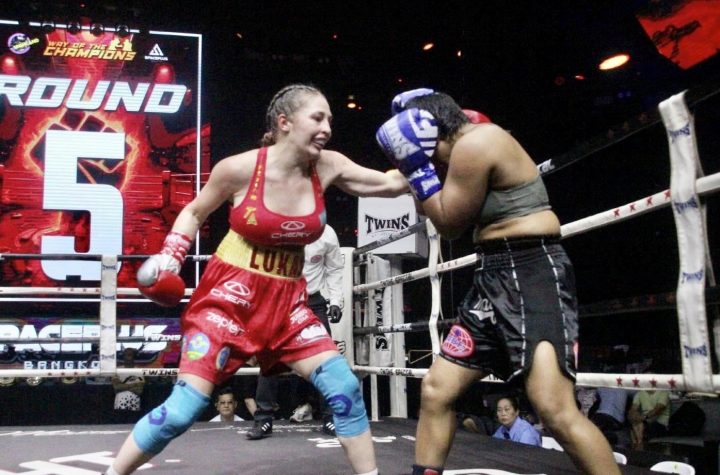
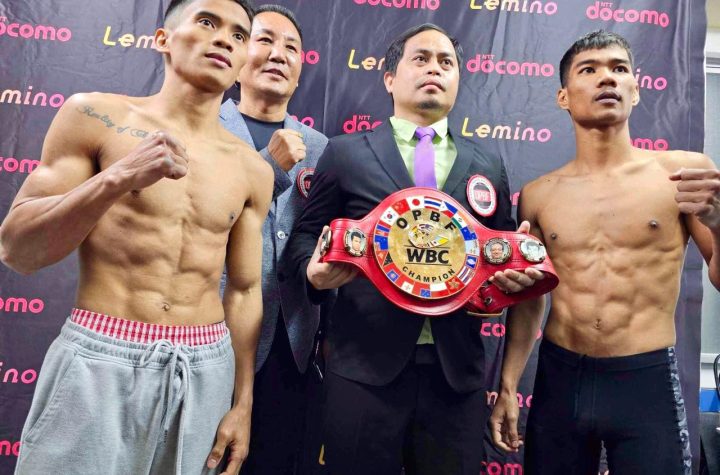
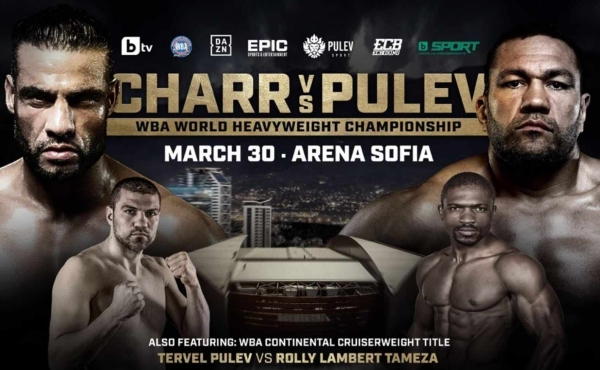
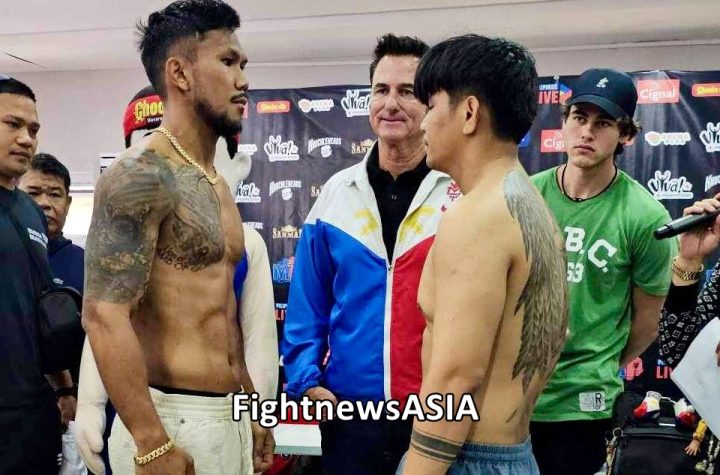
More News
Marcial vs Sinam in Manila
Era, Lukas, Innes Win in Thailand
Vitor vs Kim in Bohol